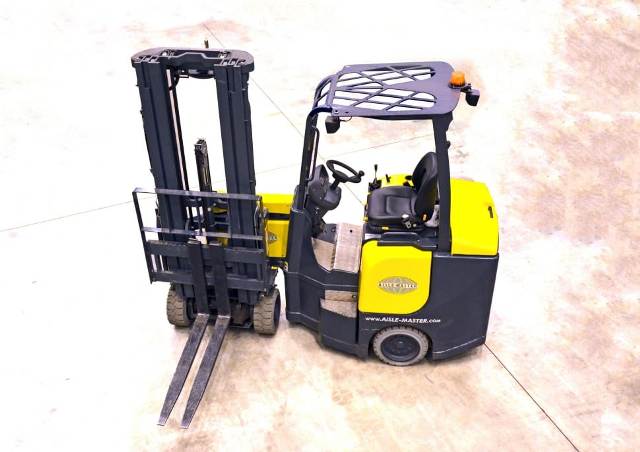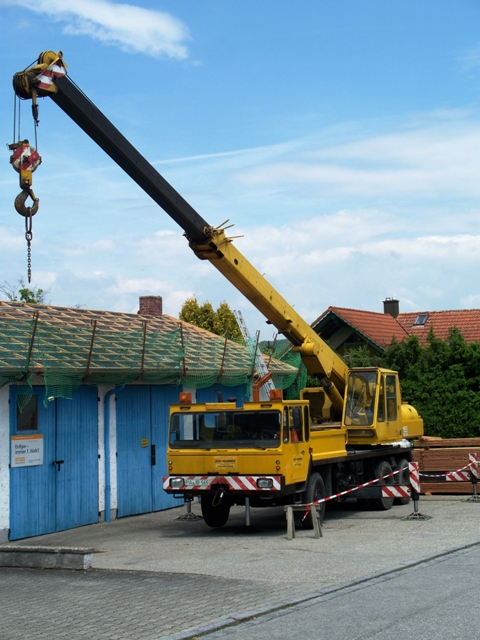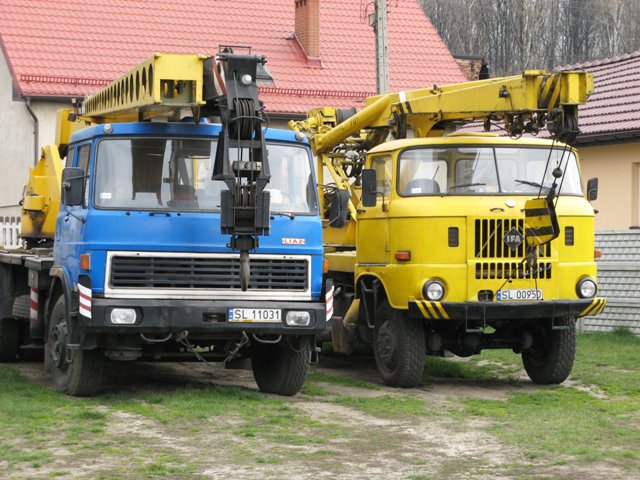Summary
– Handling and lifting of packages
– Ground handling
– Lifting, stacking
– The forks of lifting and handling equipment
– Types of crane trucks
Handling involves managing the flow of goods in order to load and unload packages, move them and store them in a warehouse, store or racking.
Handling and lifting of packages
Occupational health regulations limit the maximum load to be carried by a man to 30 kg and 20 kg for a woman. Beyond these limits, the handling of packages must be mechanised.
The handling of packages involves two main operations: handling and stacking.
– Handling is the action of moving a load horizontally.
– Stacking is the operation of raising the load to place it high.
Handling on the ground

If the industrial truck just has to move the load horizontally, the pallet truck is sufficient in most cases when the load is not more than 2/3 tons:
– hand pallet truck,
– electric pallet truck,
– platform pallet truck.
This handling equipment is equipped with fixed (non-tilting) forks that can be raised about 30 cm to pick up a package from the ground, lift it up enough to move it and then put it back on the ground.
The 30 cm elevation is provided by a hydraulic cylinder operated by pumping action on the tiller or by an electrically operated hydraulic cylinder.
The criteria to be taken into account for handling are:
– the weight of the load: light (< 600 kg), medium (< 2 T), heavy (>2 T),
– the ground: landscaped, stabilised or all-terrain,
– distance: short (< 30 m), medium (< 60 m), long (100 m),
– the frequency of handling: occasional, frequent, intense.
Lifting, stacking

If the industrial truck has to raise the stacking load, the selection criteria will select the truck according to the mass of the package, the stacking height and the place of handling, between:
– the manual stacker,
– the order picker,
– the forklift truck.
The criteria to be taken into account for lifting are:
– the weight of the load: light (< 600 kg), medium (< 2 T), heavy (>2T),
– the ground: landscaped, stabilised or all-terrain,
– distance: short (< 30 m), medium (< 60 m), long (100 m),
– Elevation: medium (< 1m60), high (< 6 m), very high (8 to 10 m),
– the frequency of translations: occasional, frequent, intense.
Outside these load and lifting height limits, handling must be directed towards fixed means such as lifting and handling platforms, conveyors and cranes.
Forks of lifting and handling equipment
This handling and lifting equipment is equipped with fixed (non-tilting) elevating forks for the stacker and order picker that cannot work at great heights with heavy loads.
The forklift truck must be able to lift heavier loads to great heights, for this purpose it is equipped with tilting forks. The forks are actually tiltable with the forklift mast which tilts forwards or backwards in relation to the load.
This tilt allows the forks to be tilted forward to pass under a load and then to press the load back against the carriage deck to wedge it and prevent it from falling off during travel.
The forks can be adjusted in spacing to handle pallets or packages of different widths. This fork spacing is often done manually, but is increasingly controlled by the steering wheel.
On some forklift trucks, the forks can be steered to a greater or lesser extent by a slight rotation of the mast controlled by hydraulic cylinders.
On telescopic forklift trucks, the head at the end of the mast that supports the forks can be swivelled in all directions and drives the forks in its movement for very precise positioning.
Types of crane trucks
There exist also some models of crane truck with a crane bucket. The crane truck can be used to lift and load materials as well as to store and transport them.
Special features of the crane truck
A crane truck has the specificity of being composed of both:
– a skip: for the storage and transport of materials;
– a crane: for lifting and handling heavy loads.
This type of truck can therefore be used to load and transport all types of materials.
Note: it is mainly used on construction sites in the form of a dump truck.
Advantages of this kind of truck body:
– use of a single machine for lifting, handling and storing materials;
– easy movement of heavy loads;
– high carrying capacity.
The different models (tipper cranes)

The crane grab is available in different models at the level of the:
– dimension of the bucket;
– type of bucket:
– removable bucket;
– tipping bucket;
– hydraulic bucket;
– bucket plate.
If you need to a fixed or mobile crane for the duration of your construction or any other residential or commercial project MCL Crane Hire has got you covered with various types of cranes for hire in Melbourne.